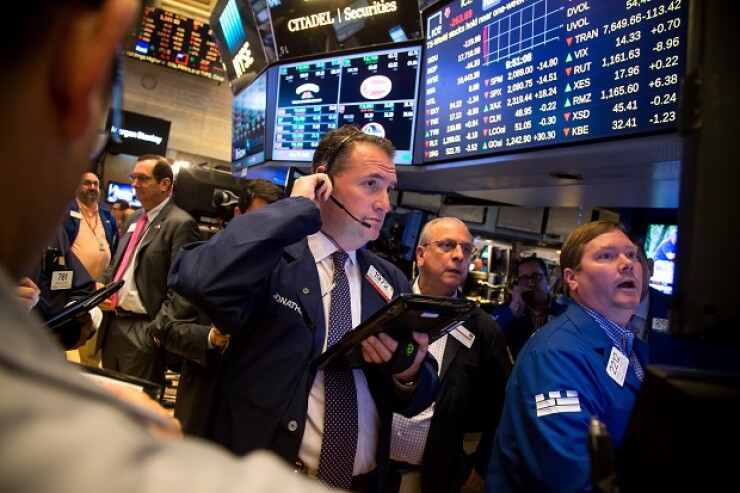
(Bloomberg) -- A little-known, thinly-traded bond ETF fund saw its assets soar on Friday in what could be indicative of the next big theme in ETFs.
The iShares Interest Rate Hedged High Yield Bond ETF (HYGH) attracted nearly $35 million in inflows on Friday, its largest day on record, in what looked to be a small number of large block trades.
This product is nearly identical to the well-known iShares High Yield Bond ETF (HYG), but with one key difference: It also employs interest rate swaps to hedge rate risk.
In light of the jump in bond yields since the U.S. election, interest rate hedged products could prove to be the new hot frontier in ETFs, taking the baton from once-beloved currency-hedged equity ETFs that offered investors ways to play the advent of Abenomics and the European Central Bank's quantitative easing.
"Investors just got finished using currency-hedged ETFs like central bank surfboards to ride waves of liquidity, now the tide is beginning to turn and you can see them starting to use interest-rate rate hedged ETFs as life rafts to deal with rising yields and expected rate hikes," said Eric Balchunas, ETF analyst at Bloomberg Intelligence. "HYGH is basically HYG but with zero duration — a sequel product essentially designed to attract investors who want HYG's exposure but without the rate risk."
The catch, he added, is that the cost of the hedge (2% to 3%) will rise along with Treasury yields.
Keeping with this theme of investors seeking protection from higher interest rates, the iShares Floating Rate Bond ETF (FLOT) took in the second-most inflows among fixed income products on Friday.
Interest rate hedged ETFs should be "an area of focus for investors in 2017, or even before then," said Todd Rosenbluth, director of ETF research at CFRA. However, none of these products have been around long enough to see how they perform amid a rising rate environment. HYGH, for instance, launched in May 2014 — well after the 2013 'taper tantrum' roiled the markets.
"This shouldn't stop investors from looking at them if you believe that rates are going to move higher and you want to maintain your fixed income exposure," he added. "The nearly 6% yield you're getting with this product can be quite attractive."
While high-yield spreads have tightened since the election, their investment grade brethren have fared better.
"The lackluster performance of high yield makes less sense fundamentally, as a stronger economy should be particularly supportive with the high yield market just inside long-term average spreads," writes Barclays Capital. Global Head of Credit Strategy Research Bradley Rogoff.
The strategist attributed the underperformance since the election of junk bonds relative to investment grade debt to fund outflows. Through the seven sessions ending Nov. 18, investors yanked $871 million from the more popular, unhedged iShares product (HYG). On Friday, HYG saw greater withdrawals than any other fixed income ETF.





